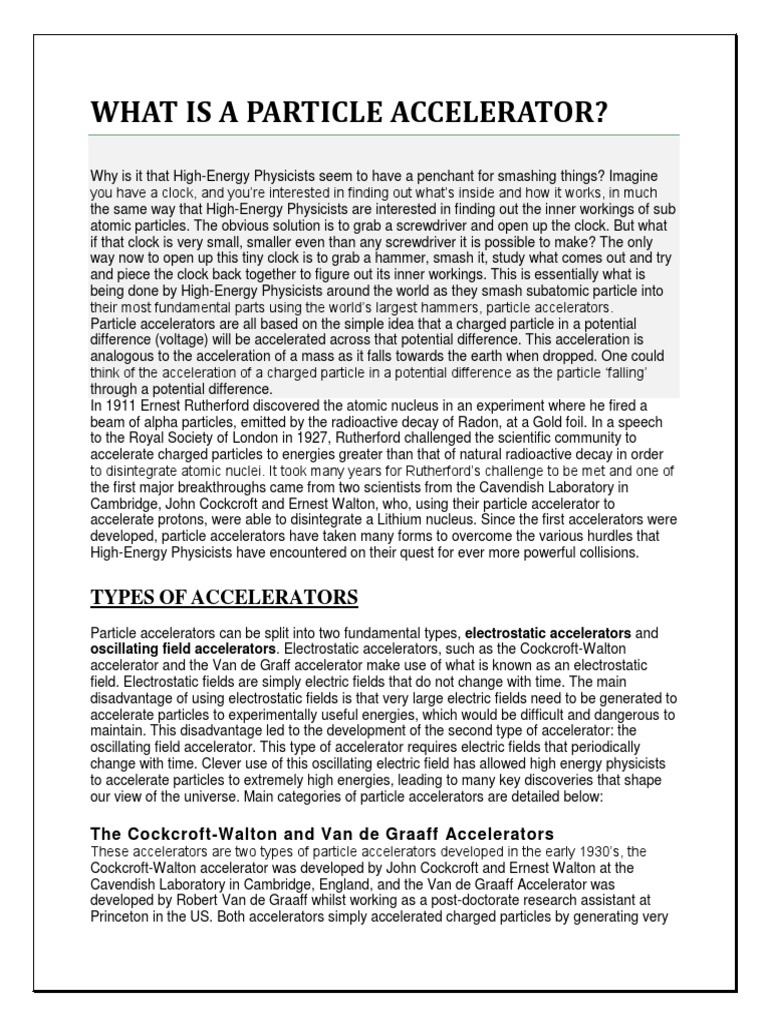The concept of particle accelerators is frequently met with awe and intrigue, as these magnificent machines are the pioneers of modern physics, delving into the fundamental constituents of matter. However, amidst the scientific reverence, a curious inquiry often arises: what would occur if one were to urinate into a particle accelerator? While this question may seem frivolous at first glance, it compels us to examine the intricate world of particle physics, the operational principles of accelerators, and the potential consequences of introducing foreign materials into these advanced scientific instruments.
To comprehend the ramifications of such an act, one must first grasp the fundamental mechanics of a particle accelerator. These devices employ electric fields to accelerate charged particles, such as protons and electrons, to nearly the speed of light, thereby allowing scientists to probe the unknown realms of particle interactions. The two primary types of accelerators are linear accelerators (linacs) and circular accelerators (synchrotrons), each with distinct operational methodologies and goals. While the former accelerates particles along a straight path, the latter circulates them in a loop, subjecting them to multiple rounds of acceleration.
Upon introduction of any foreign substance, including urine, three primary factors must be considered: the chemical composition of urine, the operational environment of the accelerator, and the immediate and long-term implications of foreign contamination.
Urine, as a biological fluid, primarily comprises water, electrolytes, urea, and various metabolic byproducts. While water—a principal constituent—may appear innocuous, the introduction of organic compounds and electrolytes into a particle accelerator’s vacuum system could trigger a cascade of unforeseen consequences. Particle accelerators operate within an ultra-high vacuum environment, designed to minimize air molecules that might scatter the particle beams and compromise experimental integrity. By injecting urine—a liquid with a significant amount of dissolved organic materials—such an action would disrupt this delicate vacuum, potentially leading to contamination and the degradation of the accelerator’s operational efficiency.
Furthermore, the electrical properties of urine might prove detrimental. As a conductive fluid, urine could interfere with the electric fields that propel charged particles, thereby disrupting the meticulously calibrated processes that lead to high-energy collisions. The accelerator’s sophisticated mechanisms rely on precise control over particle trajectories; thus, any alteration caused by external materials could lead to significant deviations and potentially catastrophic malfunctions.
Moreover, we must also consider the biological implications of introducing a biological fluid into a high-energy physics apparatus. Particle accelerators are often equipped with sensitive detectors and highly advanced materials designed to withstand extreme conditions. The introduction of organic matter could engender unintended chemical reactions, breaking down structural integrity and leading to potential corrosion of vital components. Such reactions might also generate hazardous byproducts detrimental to the accelerator’s functionality and the safety of nearby personnel.
From an operational standpoint, there are protocols and safeguards embedded within the functioning of particle accelerators to prevent contamination of their systems. Facilities employ rigorous standards regarding clean environments, and any breach of these protocols could necessitate extensive decontamination procedures, diverting valuable resources and time from scientific exploration. Thus, the ramifications of an act as seemingly innocuous as urinating into a particle accelerator extend beyond the immediate incident, potentially unraveling months or years of painstaking research.
The bizarre hypothetical scenario leads us to broader considerations within the realm of experimental physics and human fascination with science. This examination underscores an innate curiosity that frequently drives scientific inquiry, particularly when the intersection of the familiar and the extraordinary occurs. It reflects a juxtaposition of everyday human activities with the extraordinary endeavors of cutting-edge research, prompting contemplation on broader themes about the nature of science and the human experience.
In the domain of experimental physics, there exists an evolving narrative that intertwines the ordinary with the esoteric. Thought experiments involving particle accelerators can serve as both metaphor and substance, exploring the boundaries of human understanding and the limitations imposed by our biological nature. Such inquiries prompt us to ponder profound questions about human agency in a universe governed by enigmatic forces, reflecting a dichotomy that fuels both scientific progress and philosophical exploration.
Ultimately, while the inquiry into the effects of urinating in a particle accelerator may emerge from a place of humor, it serves to shed light on the fundamental principles and challenges faced in high-energy physics. This contemplative approach affirms the importance of maintaining both scientific rigor and a sense of wonder in the exploration of the universe’s fundamental truths. As scientists, it remains imperative to appreciate the intricacies of our constructs while remaining vigilant against any actions that might disrupt the delicate dance of particles and energies that define our understandings of reality.
In summation, the intersection of the ordinary and the extraordinary in the realm of particle accelerators illustrates both the profound complexities of scientific inquiry as well as the fascinating human tendencies that accompany it. Disruptions—no matter how trivial they may seem—have cascading effects, reinforcing the principle that even the smallest actions can reveal larger truths about the universe we inhabit. It is this synergy of exploration, inquiry, and contemplation that ultimately propels the field of physics into ever-expanding horizons.












